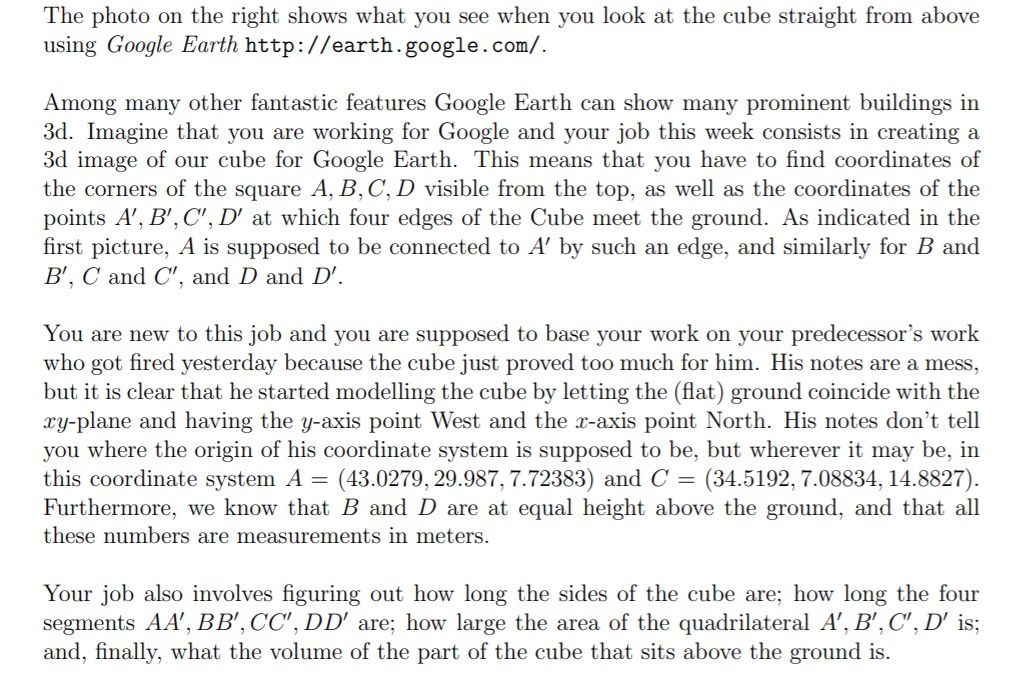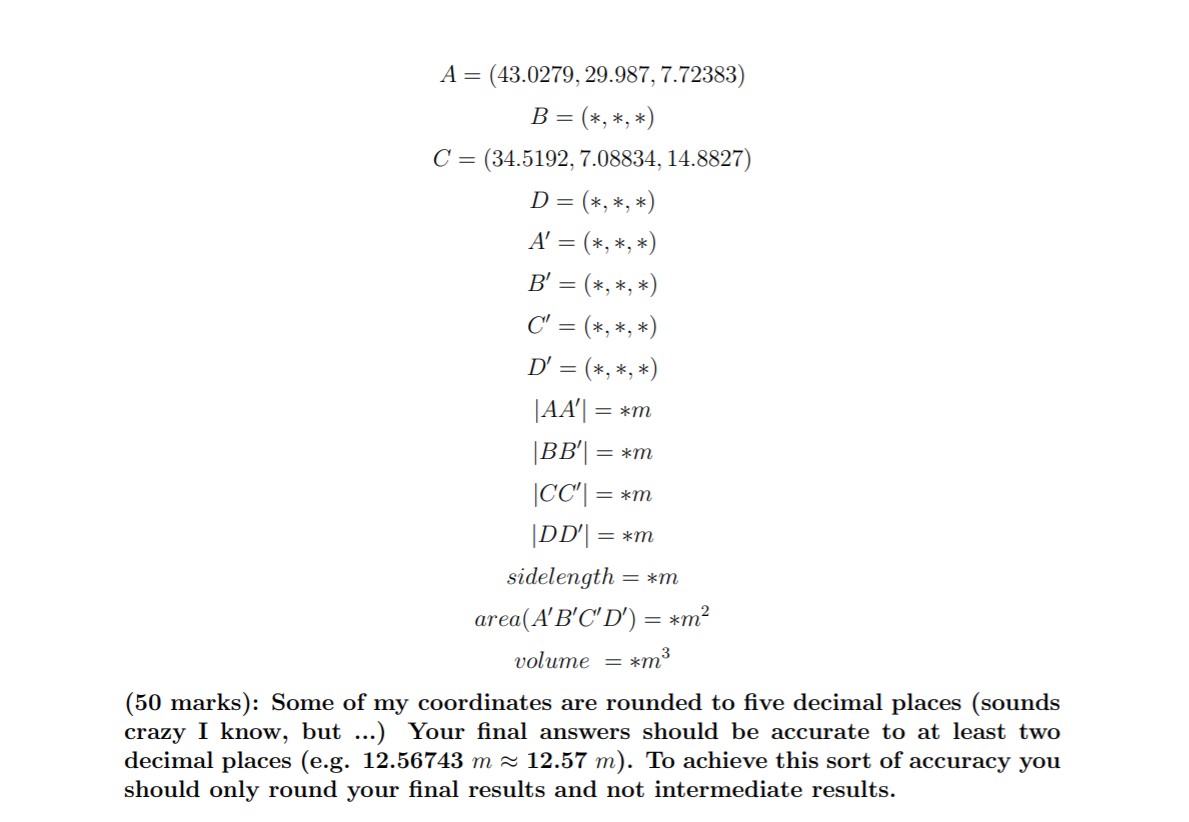\fThe photo on the right shows what you see when you look at the cube straight from above using Googie Earth http://earth. google. comf. Among many other fantastic features Google Earth can show many prominent buildings in 3d. Imagine that you are working for Google and your job this week consists in creating a 3d image of our cube for Google Earth. This means that you have to nd coordinates of the corners of the square A, B, C, D visible from the top, as well as the coordinates of the points A', B', C', D' at which four edges of the Cube meet the ground. As indicated in the rst picture, A is supposed to be connected to A' by such an edge, and similarly for B and B', C and C", and D and D'. You are new to this job and you are supposed to base your work on your predecessor's work who got red yesterday because the cube just proved too much for him. His notes are a mess, but it is clear that he started modelling the cube by letting the (at) ground coincide with the nay-plane and having the yaxis point West and the x-axis point North. His notes don't tell you where the origin of his coordinate system is supposed to be, but wherever it may be, in this coordinate system A = (43.0279, 29.987, 7.72383) and C = (34.5192,7.08834, 14.8827). Furthermore, we know that B and D are at equal height above the ground, and that all these numbers are measurements in meters. Your job also involves guring out how long the sides of the cube are; how long the four segments AA', 33', CC',DD' are; how large the area of the quadrilateral A', B', C',D' is; and, nally, what the voiume of the part of the cube that sits above the ground is. A = (43.0279, 29.987, 7.72383) B = (*, *, *) C = (34.5192, 7.08834, 14.8827) D = (*, *, *) A' = (*, *, *) B' = (*, *, *) C' = (*, *, *) D' = (*, *, *) [AA'] = *m [BB' = *m CC'| = *m |DD' = *m sidelength = *m area( A'B'C'D') = *m volume = *m3 (50 marks): Some of my coordinates are rounded to five decimal places (sounds crazy I know, but ...) Your final answers should be accurate to at least two decimal places (e.g. 12.56743 m ~ 12.57 m). To achieve this sort of accuracy you should only round your final results and not intermediate results









